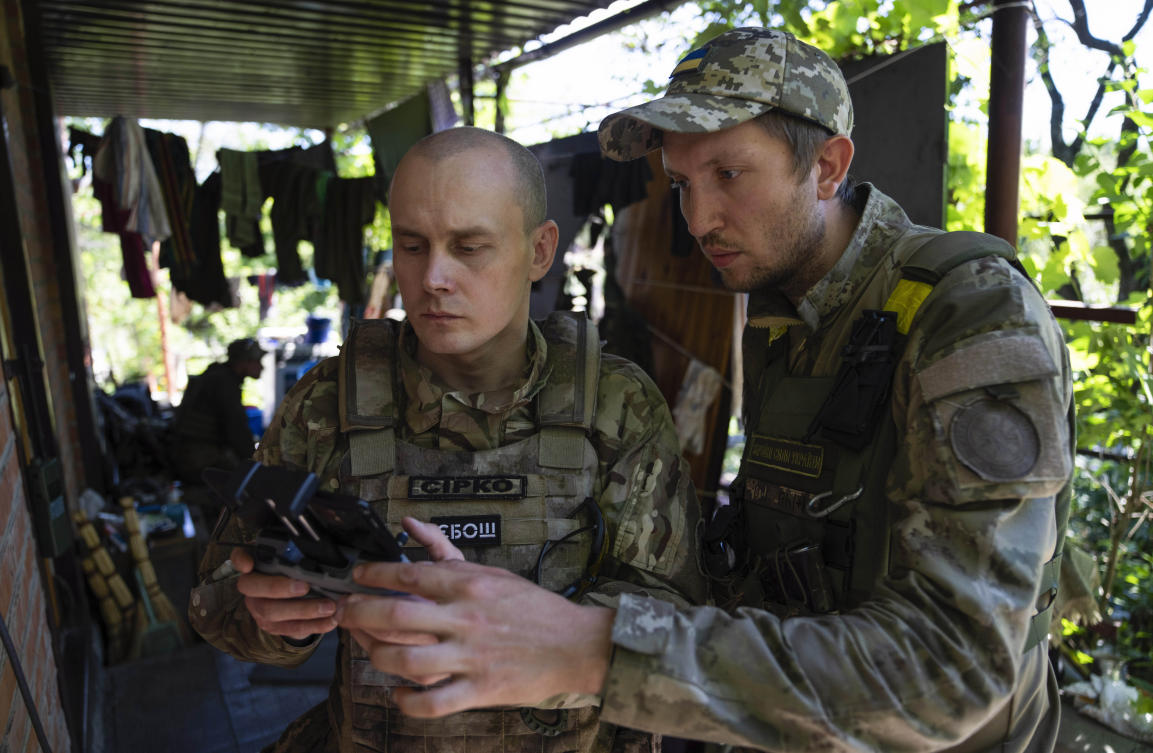Software Defined Radios allow Soldiers to adapt to cyber threats | Article
ABERDEEN PROVING GROUND, Md. (October 15, 2014) – Armed with Rifleman radios and Nett Warrior devices, soldiers scattered across the battlefield can exchange voice messages, data and images, track friendly and enemy locations and stay in touch in real time. The network waveforms that connect the radio “box” and the Army’s network provide robust cyber defenses and performance improvements, alleviating the need to provide each soldier with a new radio when a threat is detected.
As the Army delivers the next generation of software-defined radios (SDRs), it is also refining the waveforms that allow those radios to communicate. The waveforms are an integral part of the continuous improvement of the Army’s tactical communications network, enabling faster upgrades to increase security and add capabilities.
“As the military shrinks, there is a greater need to cover more territory with fewer soldiers, so when soldiers are spread out, we provide radios that link them together and allow leaders to track the location of their soldiers to keep safe,” said Col. James Ross, project manager for tactical radios. “Waveforms are the key to making this digital communication possible.”
Providing the link
The waveforms supported in the Information Repository (IR) facilitate both configuration management and deployment to accelerate, integrate, test, and implement SDR for a tactical network. The IR is managed by the Joint Tactical Network Center (JTNC), which works closely with Project Manager Tactical Radios (PM TR) and the radio vendor community. The community consists of industry partners who can fulfill the hardware “box” requirements while using government-owned waveforms in IR. The Non-Development Item (NDI) acquisition strategy, which opens up competition to the industry, will ensure interoperability between different vendor systems.
Waveforms and radios go through a rigorous process to become National Security Agency (NSA) Type I and Type II information security certified. NSA certification is especially important to provide soldiers with secure and encrypted information that cannot be cracked by the enemy.
“With generic waveforms, improvements can be made to radios without deploying new hardware in the field,” said Dave Williamson, Product Manager, Waveforms. “It also helps with cyber defense as we adjust to stay ahead of the threat.”
The Software Communications Architecture (SCA) and Application Programming Interface (API) standards provide the framework and parameters that allow radios to load waveforms, run applications, and successfully interact in an integrated system. By creating a single software baseline, the waveform can be efficiently ported to different hardware platforms, providing similar results and interoperability. Not only does this promote interoperability between radios, but an established software baseline reduces the total cost of ownership, as all changes are made (performance or cyber) only once to a single baseline that can be quickly implemented on a hardware platform Operating Environment Update for field radios.
Because waves are based on Internet Protocol (IP), they can interoperate with other IP-based networks. For example, the Soldier Radio Waveform (SRW) and Wideband Networking Waveform (WNW) provide a seamless network interface with existing DoD network infrastructures, such as the Warfighter Information Network — Tactical (WIN-T). WIN-T is the Army’s tactical network, providing a satellite and terrestrial communications network that allows soldiers to send and receive information.
Waveforms are loaded and configured through the Joint Enterprise Network Manager (JENM) using radio configuration files (RCFs). After the radio network planner completes the network plan, the JENM application translates the mission data into the format required for each radio and then downloads the configuration files directly to the radios. Alternatively, instead of downloading the RCF directly into the radios, JENM can also download the RCF into the Simple Key Loader (SKL). If a soldier needs to configure a radio, he uses SKL to download the correct RCFs.
Legacy and Software Defined Radios
While the Army procures the next generation of SDRs, it continues to use legacy radios, such as the Single Channel Ground and Airborne Radio System (SINCGARS). SINCGACRS, which have been fielded for soldiers since 1988, provide voice and data communications and can be mounted on platforms, including aircraft, as well as carried in backpacks or handheld.
SDRs are capable of loading and supporting multiple waveforms, including several legacy waveforms such as SINCGARS to support mission needs, thus providing more flexibility. Using more of the available spectrum, SDRs provide soldiers on the tactical front with a continuous stream of voice, data, images and video to use to accomplish the mission.
Two of the newer SDRs are now operational. The early radio, which was delivered in vehicle mount and dismount configurations, was the Army’s first networked radio to provide two channels of communication. With two channels, the Manpack Radio can handle different waveforms simultaneously, eliminating the need for more than one radio at each location. Early radio used SRW, SINCGARS, Ultra High Frequency Satellite Communications (UHF SATCOM) and the Mobile User Objective System (MUOS). The MUOS waveform provides a leap forward by using satellites similar to cell phone towers in space that allow soldiers to have voice, data and network connectivity from almost anywhere on Earth.
The Rifleman Radio, a single-channel hand-held radio that operates the SRW, is used by dismounted troops to send messages, access mission-related applications, and track each other’s location with a Global Positioning System (GPS) by connecting to a Nett Warrior, Android device type phone.
“Although off-grid radios serve a purpose, the radios cannot route and relay information like newer radios, so digital communications are limited,” Ross said. “Radios and airwaves work together to deliver real-time information so commanders can make informed decisions on the battlefield.”
Related links:
This may interest you : How to blow $6 billion on a tech project.
Army Web increases speed, simplicity during testing
US Army and Navy radio range extension team
101st Airborne advances training with Army Network
A new tactical application helps reduce the burden of unit task reorganization
The 101st Airborne conducts air assault training with new communications equipment
Mid-range Army radio advances with testing




Comments are closed.